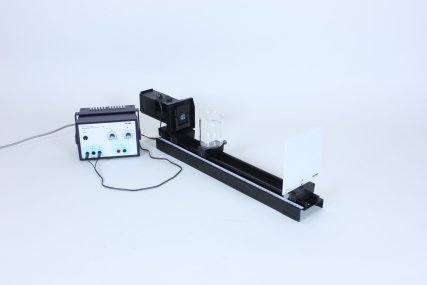Principle
A parallel beam of light which passes through an entirely clear medium cannot be seen in the plane perpendicular to the optical axis, but it does become visible if the medium is or becomes cloudy. In this case, parts of the light are dispersed from the small particles. This phenomenon is known an the Tyndall Effect afterthe Irish physicist, John Tyndall (1820 - 1893) who investigated it first in 1868. The particles which bring about the cloudiness of the medium act as dipoles which are excited and then emit Iight themselves. This light oscillates in planes which are perpendicular to the oscillation planes of the Iight passing straight through the cloudy medium.
The students should isolate the Tyndall Effect in the course of the experiment. They should recognize that the dispersed light is polarized and why, and that the light which traverses the medium is not polarized. They should also understand why with increasing cloudiness the dispersed light becomes visibly bluer and the Iight passing through the medium takes on a yellow to yellow-red coloration.
Benefits
- Multifunctional light box - All-in-one: Can be used for geometric optics on the table, colour mixing and on an optical bench
- Extension with others sets at anytime, no additional light sources needed, recognition value for students
Tasks
- Direct a beam of Iight through water, adding a substance to make it increasingly cloudier.
- At the same time observe the colour of the emergent Iight and of the visible fraction of the Iight which is perpendicular to the optical axis, and investigate whether these fractions are polarized.

